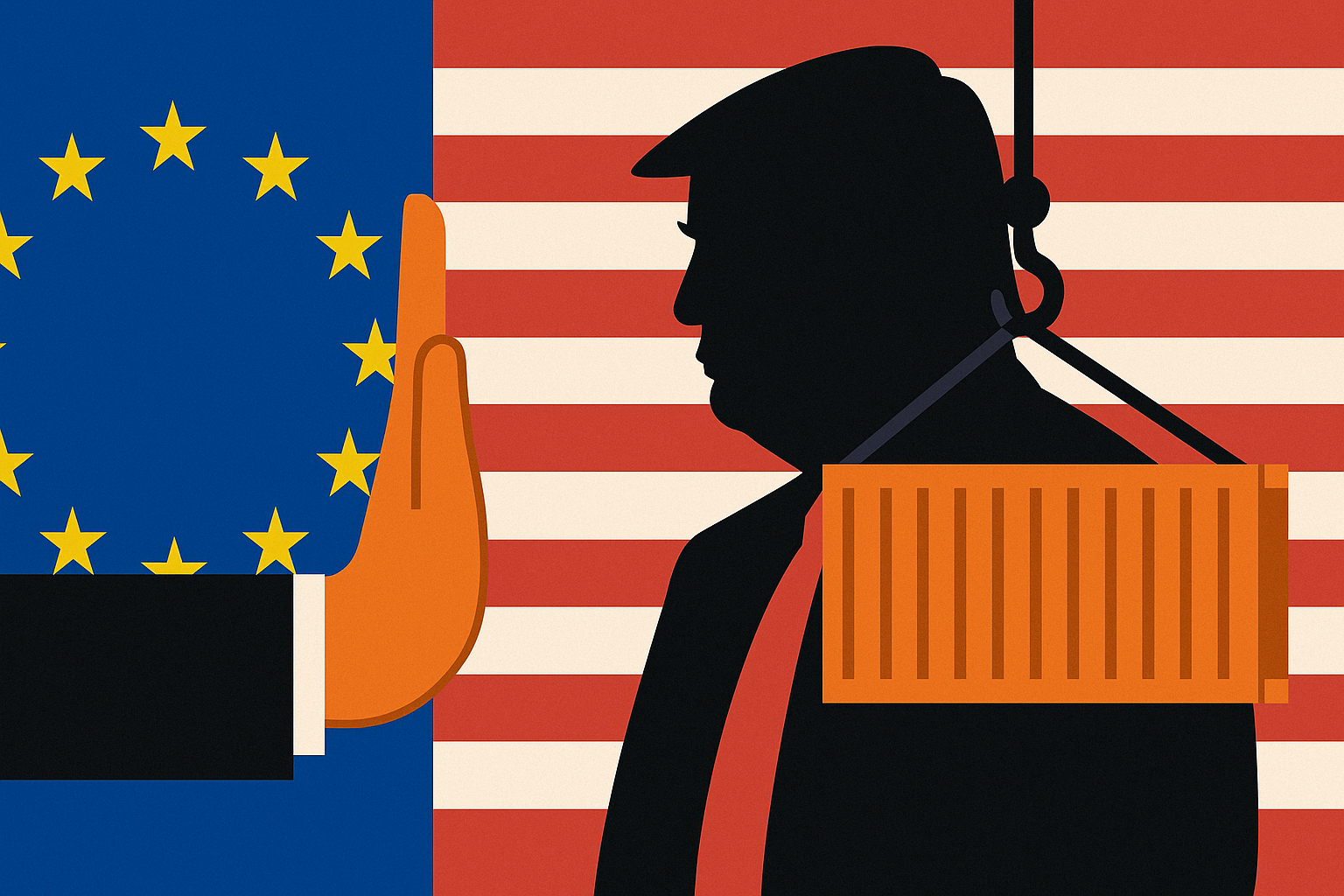President Donald Trump continues to escalate threats of increased tariffs on European goods, the European Union finds itself in a familiar position: armed with the legal and regulatory instruments to retaliate, yet politically hesitant to deploy them.
At the center of the dispute are Trump’s proposed “reciprocal tariffs,” which could reimpose duties of up to 15–20% on EU exports if a new trade agreement is not reached by August 1. While initial negotiations between the EU and U.S. showed some flexibility — including proposals to balance car imports and exports — Trump has interpreted these overtures as weakness and responded with tougher demands, according to EU officials.
Despite the president’s focus on the EU’s 10% car tariff, analysts point out that U.S. automakers, particularly those in Detroit, are unlikely to benefit from tariff cuts in Europe because they do not manufacture the smaller cars popular with European consumers. Instead, they rely on protection from the U.S.’s 25% tariff on pickup trucks and large SUVs.
A Stagnant Strategy
The EU’s negotiation approach has oscillated between hardline resistance and technical bargaining, but with little effect. Unlike trade talks with countries like Vietnam, where high tariffs can be bargained down, the EU has relatively few tariffs to offer in return. Attempts to trade regulatory changes, such as relaxing rules on food safety (e.g., chlorine-washed chicken), face domestic political backlash in many member states.
Some gestures aimed at easing tensions have been made — such as shelving a bloc-wide digital services tax and pausing an investigation into Elon Musk’s companies — but these have done little to sway Trump.
New Tools, Untapped Potential
Despite its underwhelming progress, the EU is not without leverage. New regulatory tools are available, particularly under the Anti-Coercion Instrument, adopted in 2023, which gives the EU broad authority to retaliate against economic coercion. Additionally, analysts and former trade officials, including Jean-Luc Demarty, have called for more assertive measures, such as targeting U.S. services or data-heavy tech companies with retaliatory regulation.
According to a report from the European Council on Foreign Relations, Brussels could leverage digital and data policies against major U.S. firms closely aligned with Trump’s interests. However, EU capitals remain divided. Some countries fear escalation could jeopardize U.S. support for Ukraine, while others worry about domestic economic fallout from counter-retaliation.
“Europe has the tools — it just hasn’t lined up the politics,” said one EU official.
No TTIP Repeat
Past efforts like the Transatlantic Trade and Investment Partnership (TTIP) failed precisely because both sides lacked negotiable ground that wasn’t politically toxic. The same dilemma remains. The EU may be forced to prepare a list of retaliatory tariffs, but without serious financial impact on U.S. markets or a significant diplomatic rift, Trump may simply ignore them.
The reality is that Trump’s tactics are not traditional trade negotiations — and treating them as such leaves the EU flat-footed. The fear now is that Europe is approaching another tariff crisis, but without the readiness to mount an effective response.
Looking Ahead
Trump may yet pull back before the August 1 deadline. But relying on unpredictability is no substitute for preparation. The EU’s economic security agenda has been long in the making, but the political courage to implement it is still lagging.
Until Brussels fully embraces its regulatory and retaliatory power — and unites politically behind its use — Trump’s pressure campaign may continue to set the terms of engagement.


